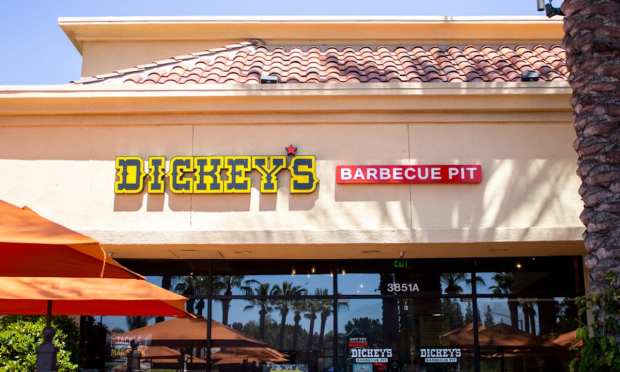Dickey’s ‘Wing Boss’ Virtual Kitchen Brand Goes Physical As Dining Returns

With consumers returning to restaurants for on-premise dining at record rates, the restaurants that have debuted virtual brands during the pandemic are at a crossroads. They could remain exclusively off-premise restaurants, leaning on the continued popularity of digital ordering for pickup and delivery, or they could leverage the brand recognition that they have garnered so far to establish physical locations.
Dallas-based barbecue restaurant chain Dickey’s Barbecue Pit, which operates around 460 brick-and-mortar locations across the U.S., is taking the latter route with its Wing Boss virtual brand. The brand currently has around 80 online-only locations. Now, Dickey’s and Wing Boss announced on Tuesday (July 13) that the hickory-smoked chicken wing restaurant is opening its first physical location. The restaurant, located in the town of Addison just north of Dallas, will open at the start of September. It will feature a full bar, a dining room and television screens for customers to watch sporting events while they eat.
“Dallas has been Dickey’s home for 80 years, so this is the perfect place for us to start building out this thriving brand,” Laura Rea Dickey, Dickey’s CEO, said in a statement. “Dickey’s has a long history of delivering Legit. Texas. Barbecue™, and by taking our heritage and applying it to smoked chicken wings, we’ve seen impressive results with guests across the country.”
The company first announced the opening of Wing Boss at the end of March 2021, when 40 locations were already up and running. The brand was joined in early June by Dickey’s Barbecue’s second virtual brand, Big Deal Burger, which serves burgers, sandwiches and side dishes at almost 50 locations throughout the United States.
The move to establish a physical presence for Wing Boss comes as many brands rethink the strategies that carried them through the hardest months of the pandemic, making adjustments for consumers’ post-quarantine routines. Many restaurants have been rethinking the role of the ghost kitchen, seeing it as a tool to test out new concepts and locations. Dickey’s may be doing the former, using its virtual concepts as a way to try out menus with an eye toward establishing new physical restaurant brands in the future.
This could be a winning strategy going forward. As Joey Simons, senior vice president of operations for culinary brand C3, which has been creating physical spaces for its digitally native brands, told PYMNTS in April, “Consumers feel most connected to brands they can see, touch and connect with in person. These are the brands that will survive on and off the delivery apps when the pendulum swings back toward in-person dining experiences.”
According to U.S. Census Bureau data, sales for food services and drinking places in May (the most recent month on record) reached $67.3 billion, with that number trending upward every month since February, suggesting that the vaccine is bringing consumers back to restaurants. Where digital ordering was the bulk of restaurants’ business during the pandemic, now it is just one of multiple relevant channels. To make the virtual brand boom of quarantine profitable in consumers’ omnichannel lives, restaurants will need to do what Dickey’s is doing: get thoughtful about what role these brands play in the new normal, as it were.
